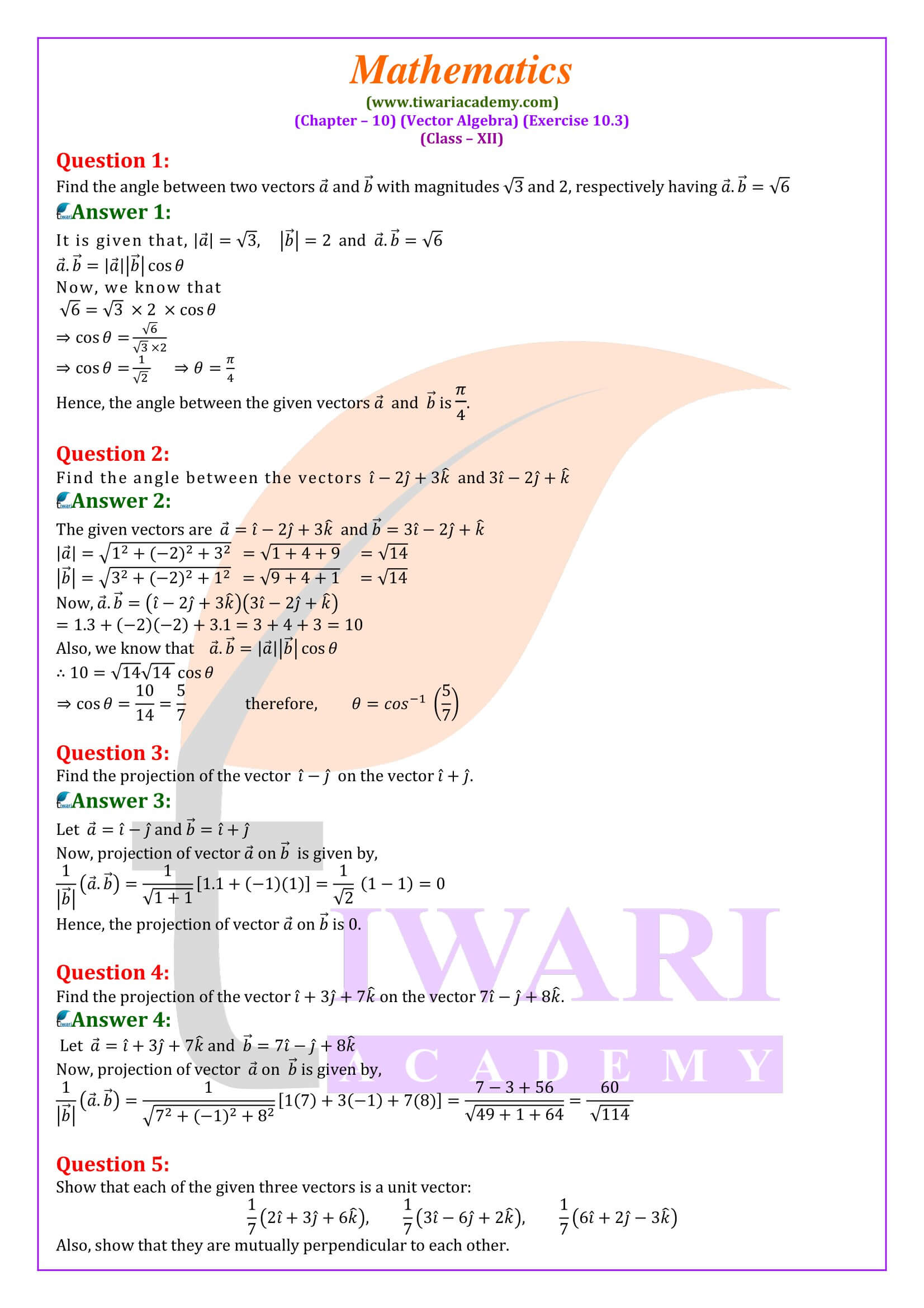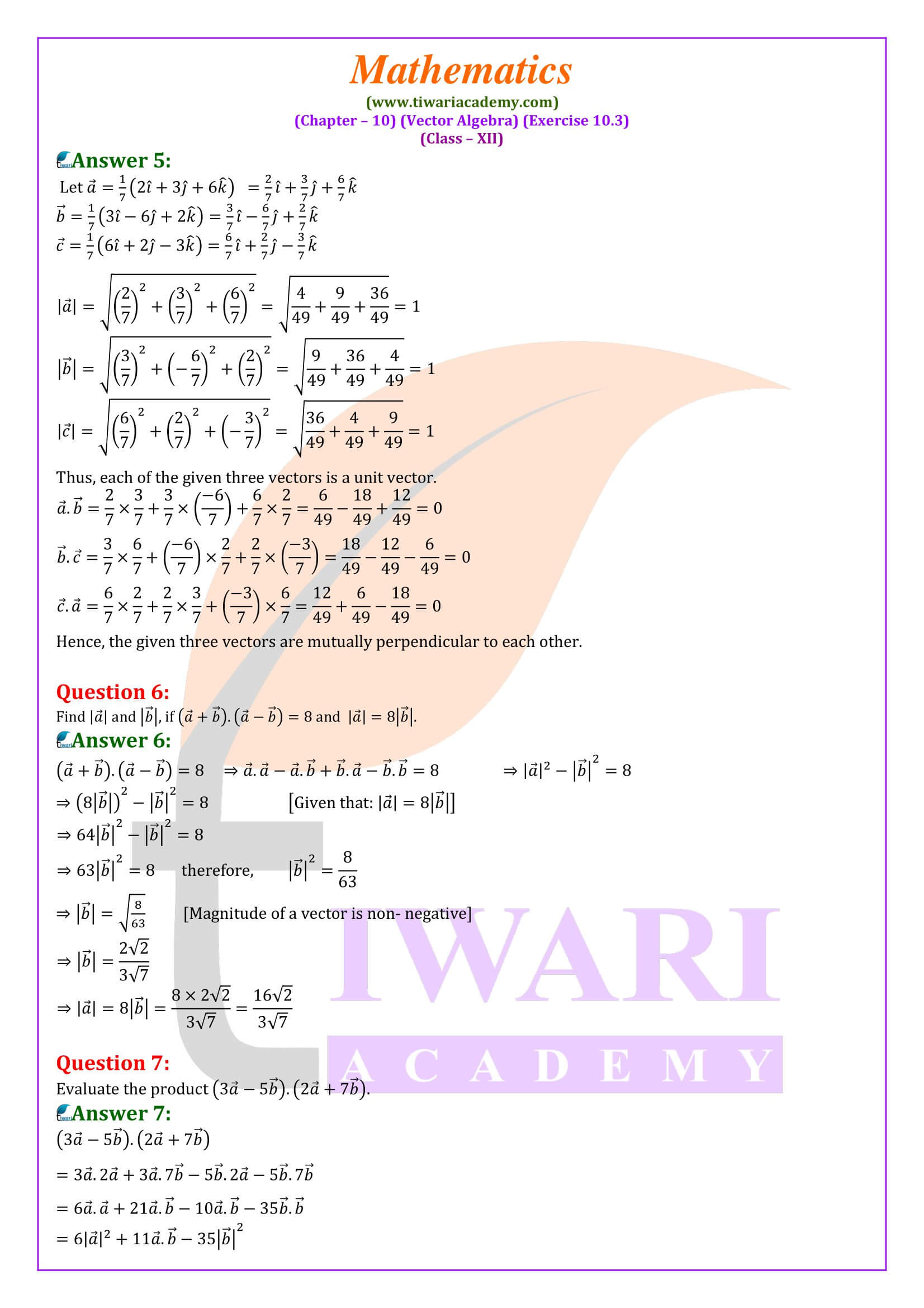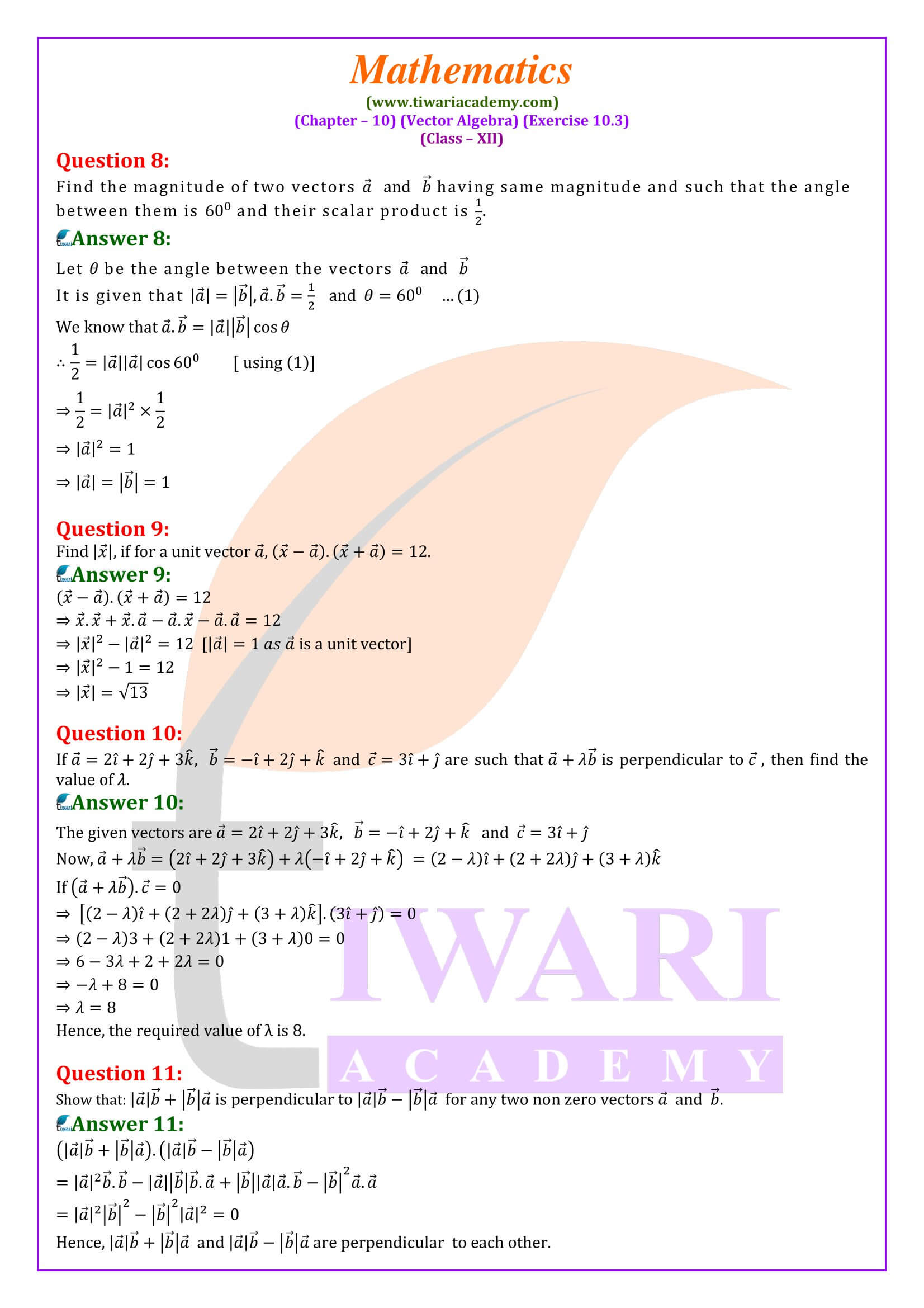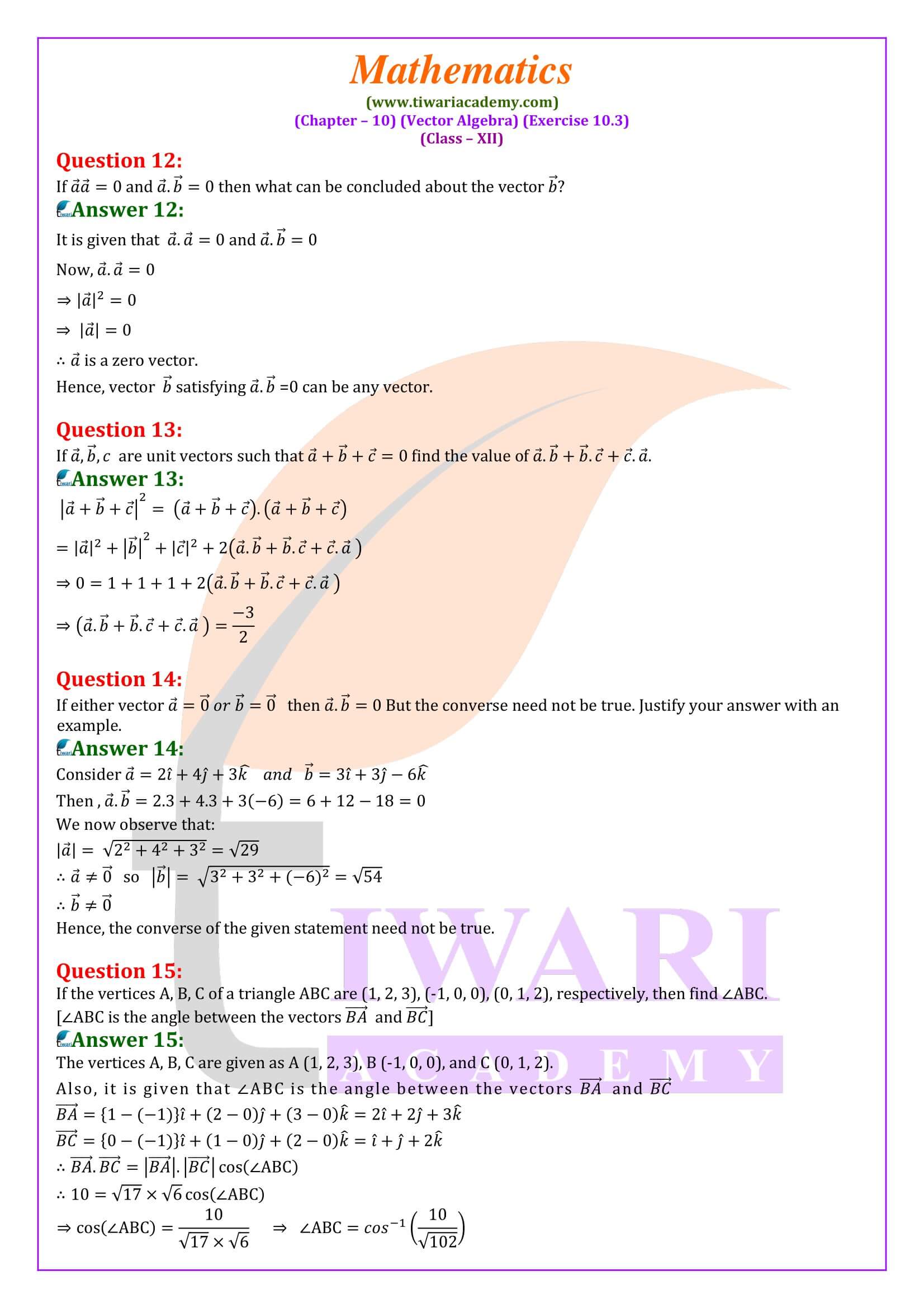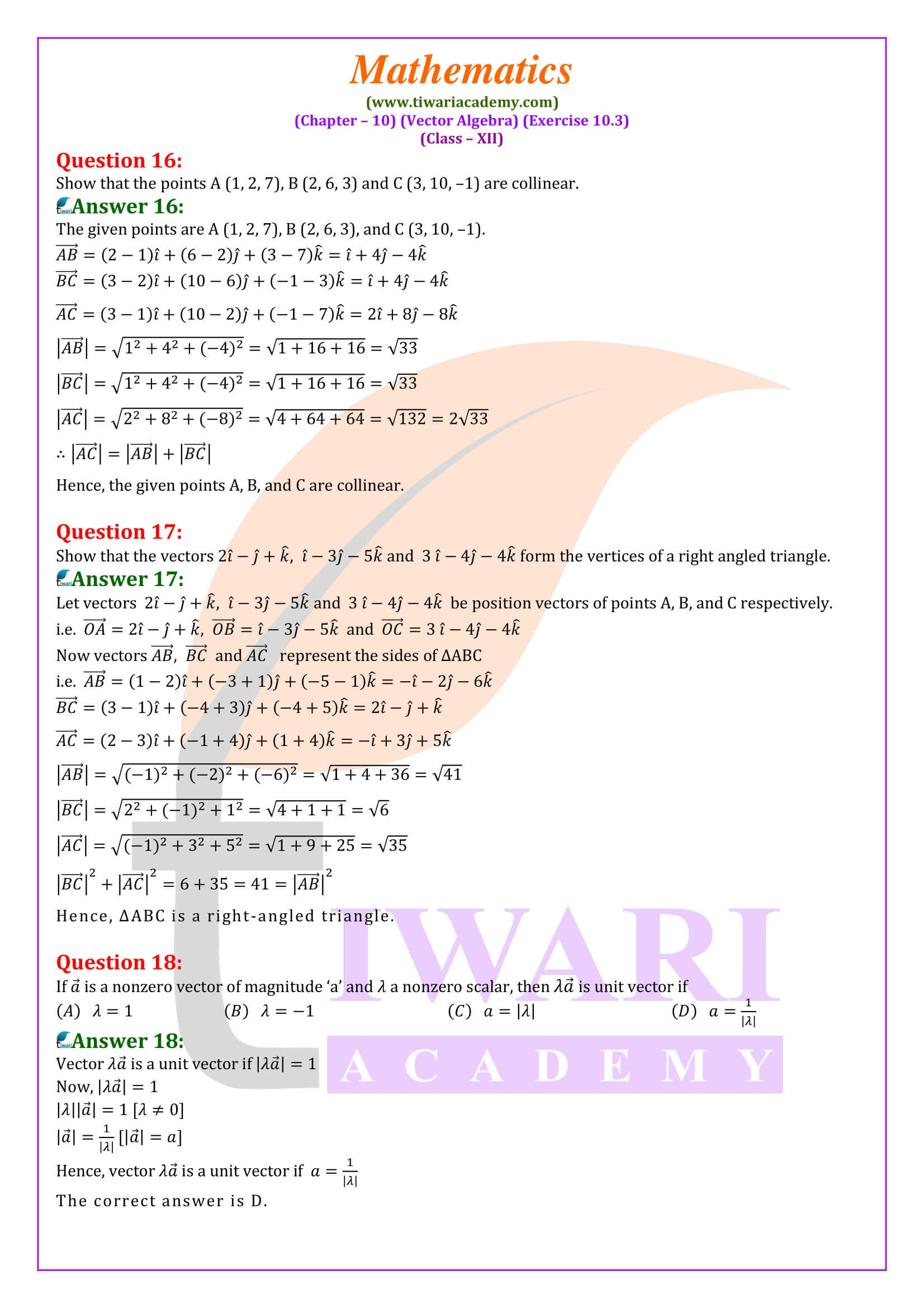NCERT Solutions for Class 12 Maths Chapter 10 Exercise 10.3 of Vector Algebra in Hindi Medium and English Medium updated for session 2025-26. All the questions of ex. 10.3 of 12th Maths are revised according to rationalised syllabus and new textbooks for CBSE 2025-26.
Class 12 Maths Exercise 10.3 in English and Hindi Medium
NCERT Solution for Class 12 Math Exercise 10.3
| Class: 12 | Mathematics |
| Chapter: 10 | Exercise: 10.3 |
| Chapter Name: | Vector Algebra |
| Content: | NCERT Book Exercise Solutions |
| Mode of Content: | Text, Videos and PDF Format |
| Session: | CBSE Board 2025-26 |
| Medium: | Dual Language – Hindi & English |
Class 12 Maths Exercise 10.3 Solution in Hindi and English
NCERT Solutions for Class 12 Maths Exercise 10.3 solution in PDF file format free to use or download. Solution is available in Hindi Medium and English Medium along with videos. All the contents are prepared following the latest CBSE NCERT Textbooks for 2025-26. Contents are in PDF to download or view online without downloading. Video solutions in Hindi and English Medium are also given here explaining each questions in simple language.
Class 12 Maths Chapter 10 Exercise 10.3 Solutions in Videos
What are Direction Cosines?
Consider the position vector of a point P (x, y, z). The angles produced by the vector along the positive directions of the x, y and z axes, respectively, are called direction angles. The cosmic values of these angles are called vector direction cosines and are usually represented by L, M and N, respectively.
Types of Vectors
- Zero vector: A vector whose initial and terminal digits coincide is called a zero vector (or zero vector) and is denoted as 0. You cannot give the zero vector a certain direction because it has zero magnitude. Or alternatively, any address can be considered.
- Unit vector: A vector whose magnitude is unity (that is, 1 unit) is called a unit vector. The unit vector is represented by one in the direction of a given vector.
- Coinitial vectors: Two or more vectors that have the same starting point are called Coinitial vectors.
- Collinear vectors: Two or more vectors are called collinear if they are parallel to the same line, regardless of their magnitude and directions.
- Equal vectors: Two vectors are said to be the same if their starting points have the same magnitude and direction regardless of their positions.
- Negative of a vector: A vector whose magnitude is similar to a given vector but the direction is opposite to the given vector is called negative of the given vector.
What is the main concept given in class 12 Maths Exercise 10.3?
Class 12 Maths Exercise 10.3 is based on the concept of Dot Product or Scaler Product and projection of a vector.
Which is the most important question from Exercise 10.3 of class 12 Maths?
Question number 4, 10 and 13 are the questions which are asked frequently in the exams.
Are examples important for CBSE Board Exams?
Example number 18 and 19 are considered as important one for pre-board as well as board exams.
